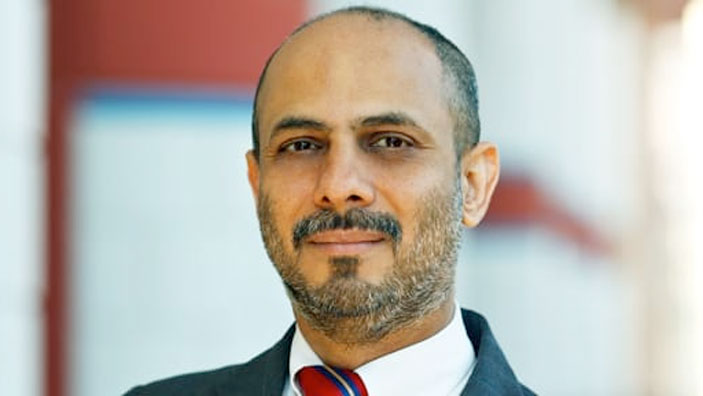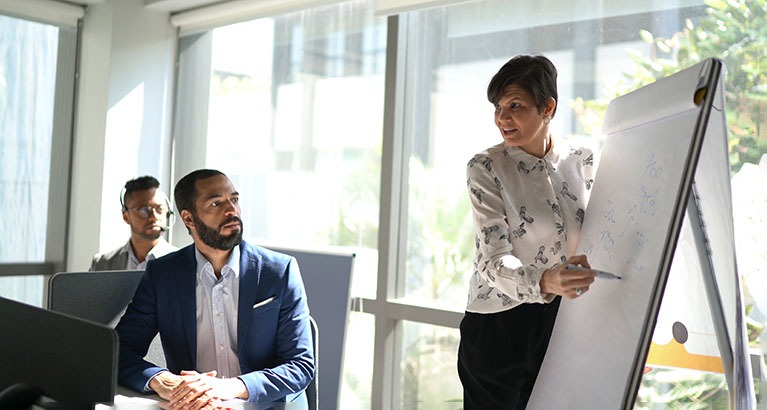
As a Professor of Finance at Cambridge Judge Business School, it’s not surprising that Raghavendra Rau has published papers in top academic journals on such topics as mutual fund performance, corporate mergers and initial public offerings. What’s unusual is his keen interest in how CEOs and investment managers were shaped by events in their childhoods and, in a new paper, even before they were born.
A just-completed study entitled ‘Hazed and Confused’ finds a clear effect decades later on CEOs who had prenatal exposure to toxic US “Superfund” sites as designated by the US Environmental Protection Agency (EPA), which are typically the most hazardous contaminated sites in the US such as landfills, mining sites and manufacturing plants, with EPA documents showing that most of them were actively polluted for decades over the 20th Century.
‘Superfund’ CEOs take more risks, and this leads to underperformance
Such CEOs take more risks, and these risks lead to underperformance for their firms and an increased likelihood of CEO turnover. The negative effects for companies led by such “Superfund CEOs” included investment decisions, capital structure, cash payouts and reduced firm valuations.
While the health effects of prenatal exposure to serious pollution has long been known, the study sheds new light on the long-term effects of pollution on decision-making among powerful people, with implications for stakeholders including investors, employees, and society as a whole.
“The study links medical evidence on the links between developmental toxicity on neurodevelopment, cognitive function and behavioural traits to CEOs’ risk-taking behaviour, providing valuable insight into the long-term consequences of prenatal pollution,” says Raghu, as Raghavendra Rau is usually known, who is the Sir Evelyn de Rothschild Professor of Finance at Cambridge Judge.
“Given the recent wildfires in Canada and their knock-on effects with smoke pollution, we think this study is a timely reminder that the effects of pollution can have lasting implications in many ways beyond well-known health factors.”
Hazed and confused: the study methodology in a nutshell
The study focuses on three major dimensions of corporate decision-making: the risk-taking policies of the firm, firm valuation, and CEO performance. “The results are strikingly consistent across all three dimensions – Superfund CEOs take more risks, the risks do not pay off, adversely affecting the value of the firm, and the CEOs are more likely to be fired,” the study says.
“More specifically, the greater the CEO’s prenatal exposure to Superfund sites, the risker the capital structure of the firm – the firm holds less cash, has higher leverage levels, and makes fewer cash payouts.”
The study is based on a sample of 1,803 Superfund sites listed on the EPA’s website, in all 50 US states, including 23 sites in Santa Clara, California, the most of any other county in the US, which is home to Silicon Valley and the headquarters of more than 30 Fortune 1000 companies.
Using public records, the study then identifies birthplaces and birthyears for CEOs in a sample of all publicly traded US firms that were listed in S&P 1500 between 1992 and 2018. The authors were able to identify 638 CEOs “whose birth counties experienced the US’s worst hazardous contaminants during their birth years”, and compared their records as CEO to 2,109 non-Superfund CEOs.
The affect of early life events on investment behaviour
The new “Hazed and Confused” study (title adapted from the Led Zeppelin song “Dazed and Confused”) follows two previous studies led by Raghu that focused on the effect of early-childhood events on later behaviour by CEOs and fund managers.
A study published in 2021 in the ‘Journal of Banking and Finance’ (titled: “Till death (or divorce) do us part: Early-life family disruption and investment behavior”) examined the effect on future fund managers of early-childhood disruption in the form of death or divorce of parents.
The paper found that fund managers who experienced such disruption take lower risk and are more likely to sell their holdings following risk-increasing events affecting companies. It also found a higher “dispositional effect” – greater propensity to sell stocks when they are at a gain than when they are at a loss – among fund managers who experienced such disruptive events in childhood, because these investment managers may be “more vulnerable to future loss.”
How early-life natural disasters affect CEOs: an Ig Nobel-awarded study
An earlier paper published in 2017 in the ‘Journal of Finance’ (titled: “What doesn’t kill you will only make you more risk-loving: Early-life disasters and CEO behaviour”) looked at CEOs who in childhood experienced various disasters such as earthquakes, hurricanes and floods. The study found that future CEOs who experienced only moderate disasters without serious consequences were more likely to take risks than those who experienced no disasters, while those who experienced the most extreme natural disasters were the most risk averse.
This risk-taking effect was reflected in such factors as leverage ratio, cash holdings, stock volatility and acquisitions.
The natural disasters paper was awarded the Ig Nobel Prize for achievements that “first make people laugh then make them think”, and Raghu accepted the award at a ceremony at Sanders Theatre at Harvard University in Cambridge, Massachusetts. The Ig Nobels, now in their fourth decade, are awarded by the magazine ‘Annals of Improbable Research’.
“I’ve won other awards for serious looks at finance and economics, but I’m also proud of the Ig Nobel Prize because it recognises research that opens people’s eyes to new ideas that are really interesting and accessible,” says Raghu, a native of India, who has taught at other universities including the University of California, Berkeley, Purdue University and UCLA in addition to Cambridge Judge Business School.
How prenatal exposure to toxic waste results in increased company risk
But what was it that got Raghu interested in how the CEOs of today were shaped by the events early in their lives – or even before they emerged from the womb?
Here are his thoughts:
Was there a particular event that sparked your interest in how CEOs were shaped by their early experiences?
My initial interest in this topic didn’t really focus on CEOs or investment at all, as I’ve long been fascinated by the broader debate about nature and nurture – and how these two elements interact to make human beings what they are. The studies on childhood disaster and prenatal exposure to poisons focus on the nurture element of the equation, and the design of those studies allowed us to make some really interesting findings.
In simple terms, what is distinct about the new toxic waste study design?
Most research about early childhood or prenatal experience involve people whose parents make a conscious decision based on actionable information: people choose to live in a neighbourhood with good state schools, or they choose to live near water because they love outdoor sports – but those conscious choices affect research outcomes. In the toxic waste study design, by contrast, these future CEOs’ parents had no idea they were living in a toxic area – as the problems were discovered much later – so that allowed the study to focus only on the effect the toxic exposure had on the future CEO, rather than factoring in the parents’ risk preferences.
Explain what you mean by risk preference?
People make all sorts of decisions based on their tolerance of risk: people live in areas more prone to flood because they love birdwatching on rivers, or they choose higher-yielding but riskier investments. The same is true with buying a car: people read reviews about handling, comfort and safety – and they don’t always buy the safest car even if it’s the same price as one that is more safe, because they are willing to assume that risk to get a sportier car in their price range. But we wanted to measure a CEO’s own risk-taking proclivity through a nurture-based event, exposure to toxic materials, and we didn’t want that that to be influenced by heredity or other nature-based factors.
Did these childhood disasters or prenatal toxic exposure turn these CEOs into ‘bad guys’?
We have avoided making value judgments, as we focused only on the results of these experiences. We found a connection to risk-taking in CEOs decades later, but risk-taking is not necessarily a bad thing in business as all CEOs measure risk and reward on a continual basis in making decisions.
Be honest. Do you hope for a second Ig Nobel Award for the Superfund study?
That wasn’t the intention when we launched the research, but it would be a lot of fun. Finance can be a niche subject, so it’s great that research like this is seen by a broader audience through an award competition like this.
You’re not a CEO, but do you have any personal experience with these sorts of things?
I don’t have children of my own, so these are not personal experiments. But I have certainly observed lots of people ranging from family members to other academics, and wondered how much of their personalities – and their particular quirks – were impacted by nature and by nurture.
Any names, and quirks, that you’d wish to share?
I’m a cautious Professor of Finance, even if my study was recognised by the Annals of Improbable Research. You should know better than to ask a question like that!
Featured research
The new study – entitled “Hazed and confused: Prenatal pollutant exposure and CEO risk-taking” – is authored by Raghavendra Rau of Cambridge Judge Business School, YiLin Wu of National Taiwan University, and Lok-Si Ieong of Baruch College.





